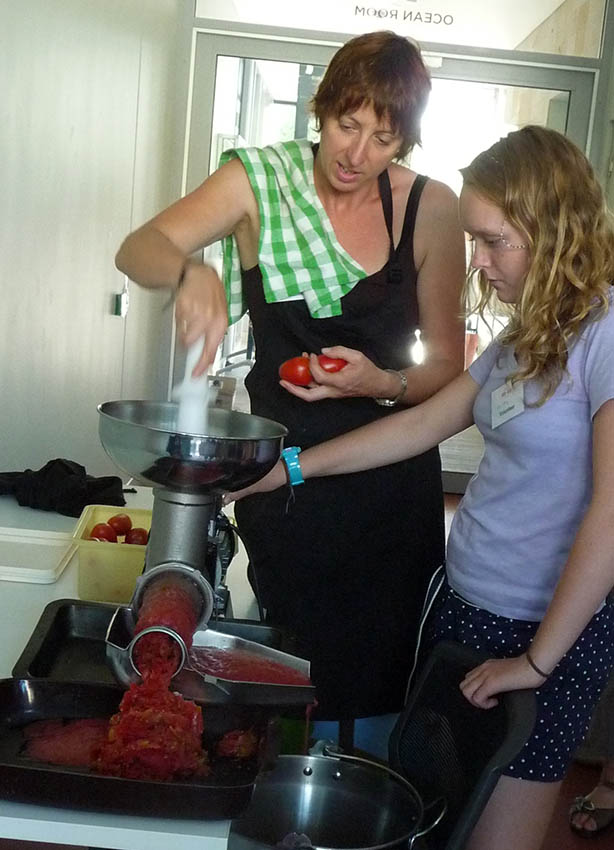Tomato passata flambé
On job applications and personality tests, multi-tasking has generally come up as one of my key strengths. This is probably because my answers reflect that I’ve juggled family, multiple jobs, tasks, events, social commitments, study and community involvement reasonably efficiently over the years, managing to keep most of the balls in the air… at least most of the time.
So it came as something of a surprise to come home to a house redolent with the not-very-appetising aroma of burnt tomato after a recent evening out. It hit us as soon as we opened the front door – the cloying smell of what I instantly knew to be tomato passata gone horribly wrong.
Essentially, passata is just fresh tomato puree. All you need is an abundance of Roma tomatoes and an equal amount of enthusiasm. The first step is to wash and check the tomatoes, removing any dodgy bit, and then to blanch them in hot water to soften the skins. Since I generally look for shortcuts, I tend to leave out the blanching part and simply cut them in half before bunging them into my stockpot. On goes the lid, gas down as low as it’ll go and set the timer for about an hour.
Of course, if I had a lovely electric tomato press I probably wouldn’t cook the tomatoes. The great thing about a tomato press is that it’s quick. It also has two exit chutes: one for the chunky bits (skins and pips) and one for the tomato slush. This would mean I wouldn’t end up having to cook, reduce and sieve before preserving. Shani Gramham ran a passata-making session a couple of years ago at the Less-is-More Festival and demonstrated using a tomato press. I’ve lusted after one ever since.
Anyhow, having reached my one-hour breakpoint, I usually remove the lid, give the tomato goop a quick stir and then reset the timer for a similar amount of time – but this time I leave the lid off in order to reduce the goop to a suitably passata-like consistency. Then it’s really rinse-and-repeat: I check the goop regularly, stir occasionally and enjoy the smell of slow cooking tomato whilst getting on with something else. This takes several hours, but I think it’s worth the wait.
At this point most people would immediately pour their passata into sterilised jars, seal them and then boil the jars in a canning pot to preserve the puree – or use a fowlers vacola to do the job, if they happen to have one. I seldom make enough to make all that rigmarole worthwhile. Instead I squish the goop with a potato masher, not bothering to sieve it, then pop it into half litre plastic containers. Once it’s cool, I put some in the fridge for immediate use and rest of the containers in the freezer. This is a very effective way to preserve the passata, assuming you have enough freezer space.
My last tomato cook-a-thon turned out slightly differently. When it got to the reduced enough stage, we went off to the movies instead of portioning the goop to into plastic containers. I reckoned it would be cool by the time we got home and I could just do it then…which is how the flambé part came about.
Note to self: muli-tasking fail; next time remember to check that you’ve TURNED THE STOVE OFF before rushing out the door!
(At least I managed to salvage the pot – thank goodness for good quality stainless steel and determination.)
